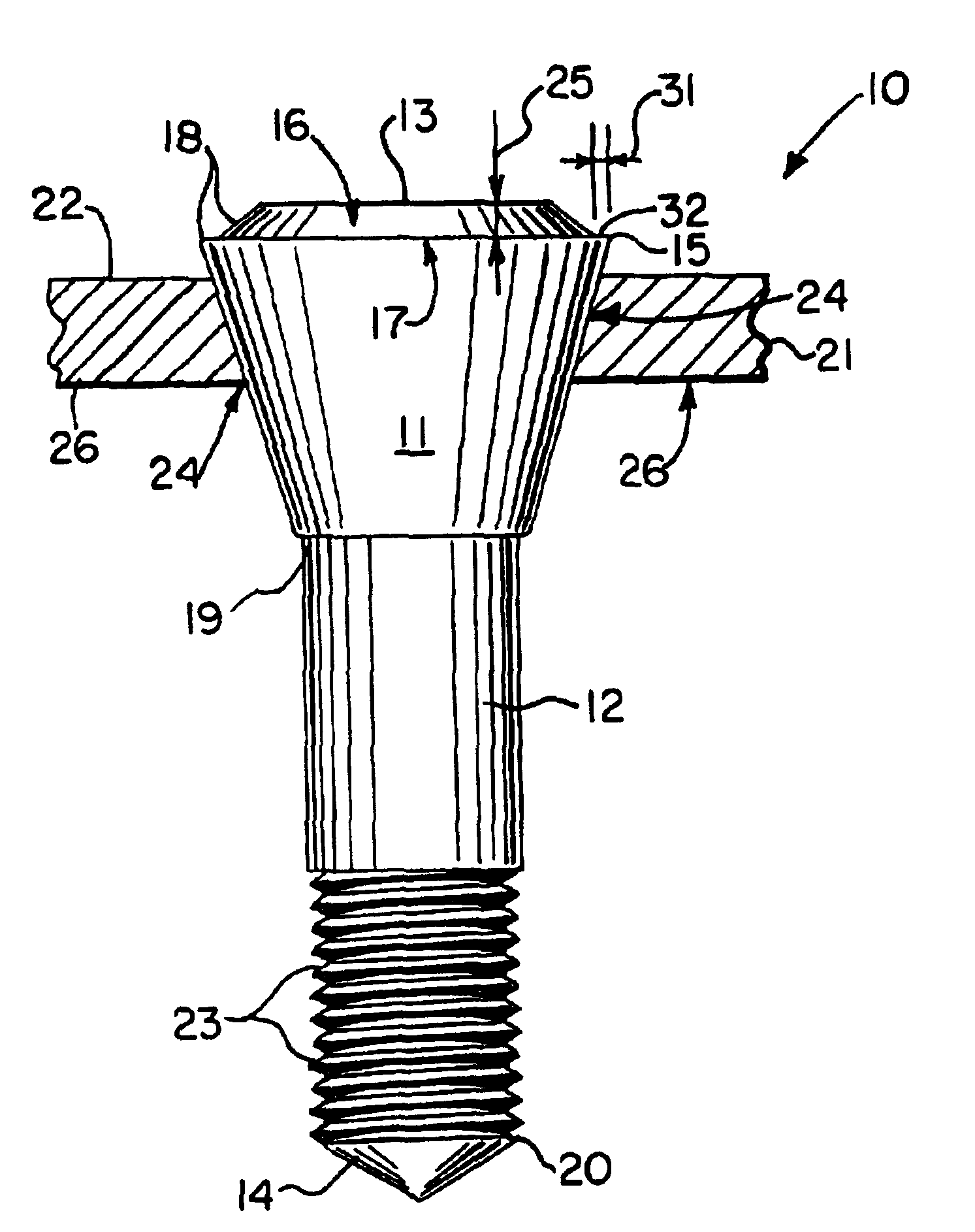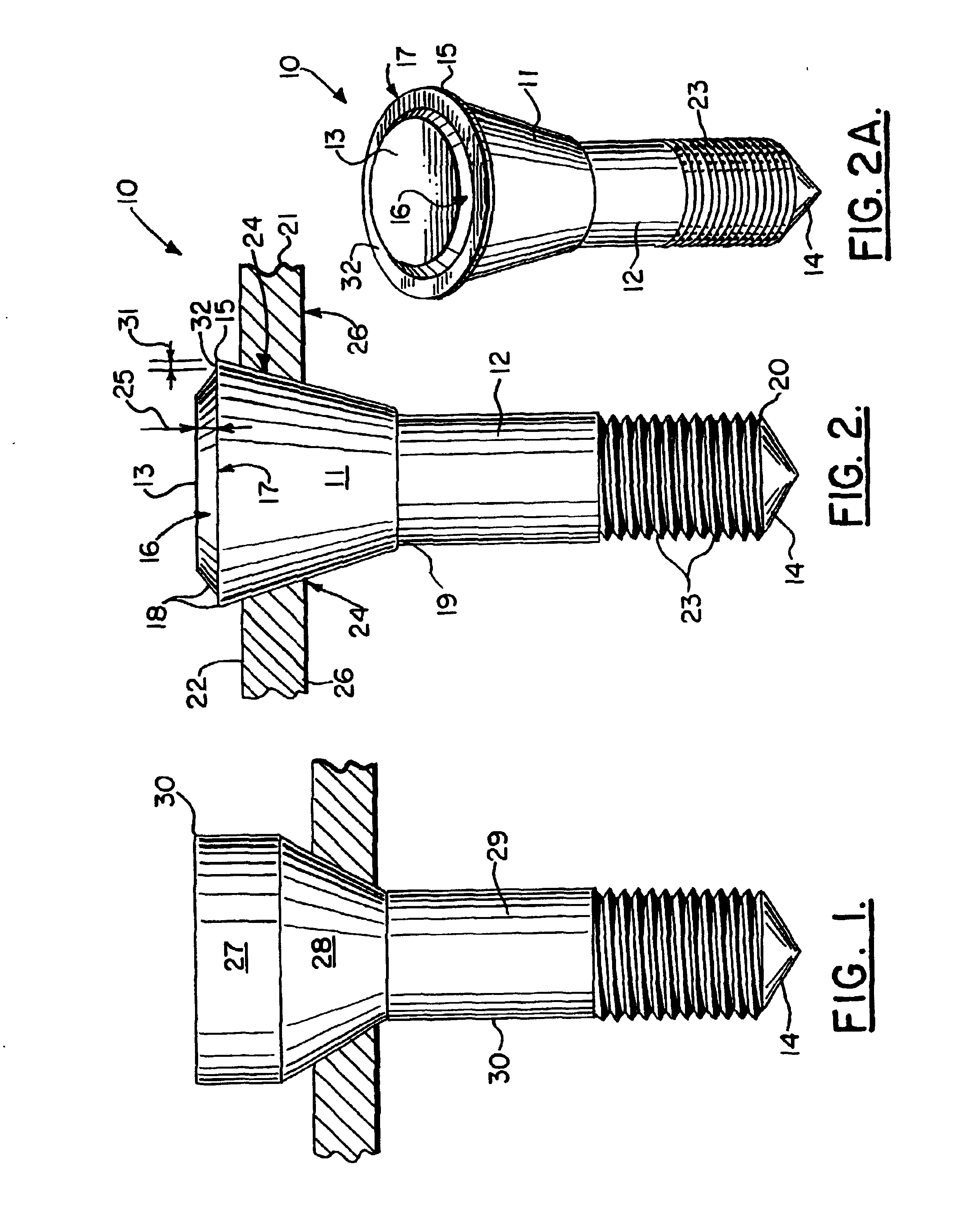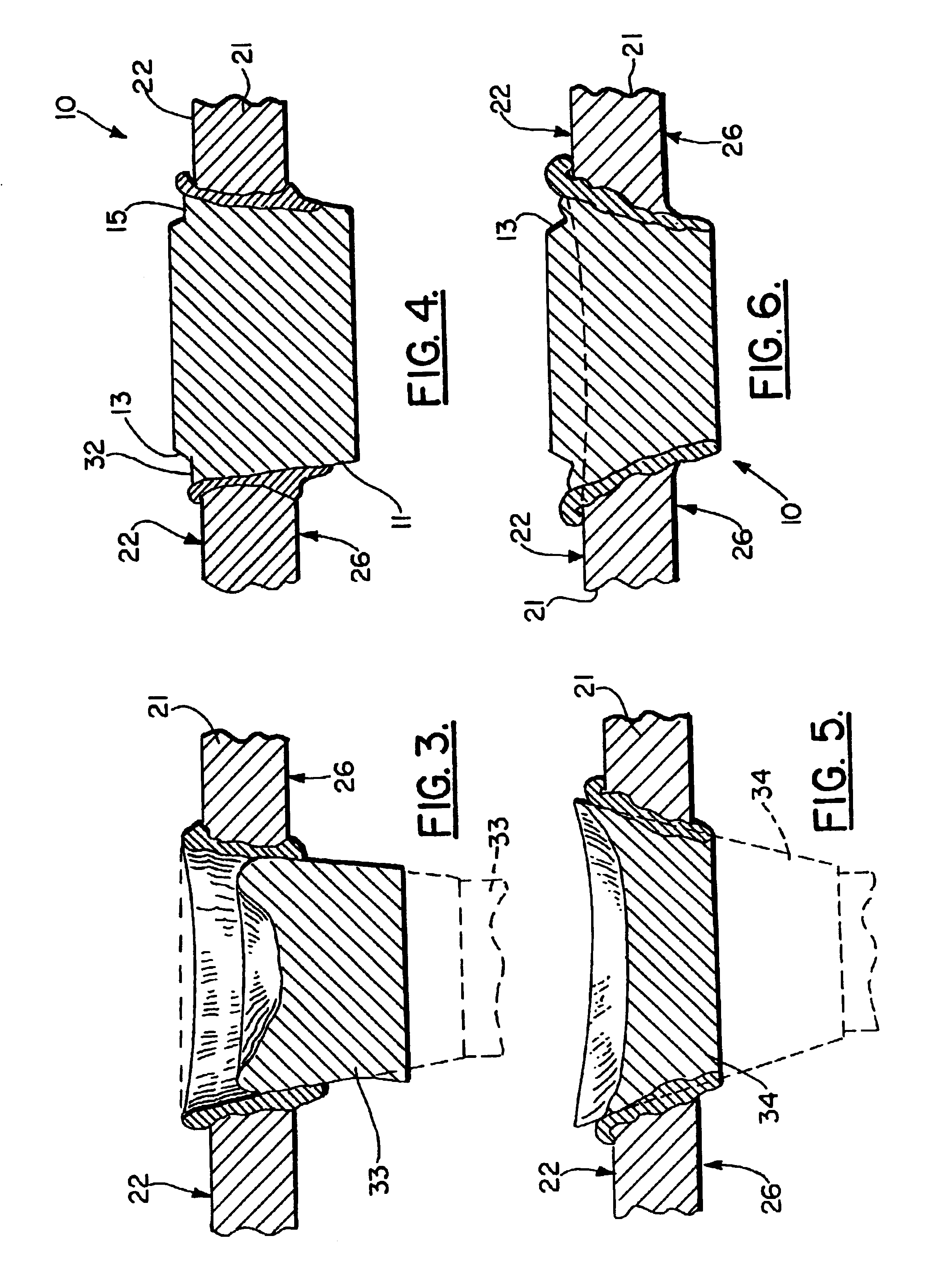Friction pull plug welding: chamfered heat sink pull plug design
a technology of friction pull plugs and heat sinks, which is applied in the direction of welding devices, soldering devices, manufacturing tools, etc., can solve the problems of complex bonding of the last interfacial location, affecting the welding process, and reducing the welding efficiency of the plug top, so as to facilitate a good weld and increase the heating capacity of the welding process. , the effect of less heat sinks
- Summary
- Abstract
- Description
- Claims
- Application Information
AI Technical Summary
Benefits of technology
Problems solved by technology
Method used
Image
Examples
Embodiment Construction
[0053]FIG. 1 shows a pull plug 30 with a large heat sink mass, showing areas of hot interface and cold material when the plug 30 is pulled and rotated to produce heating and forging load. Pull plug 30 has frustoconical section 28 and shank 29 below heat sink mass 27. Such a large heat sink mass 27 can cause problems as will be discussed more fully hereinafter.
[0054]In FIGS. 2-2A, the first embodiment of the apparatus of the present invention is designated generally by the numeral 10. FIGS. 2-2A illustrate a diagram wherein a pull plug 10 has been placed in position through an opening (e.g. drilled) 24 in plate 21. Plug 10 has an upper portion 18 and a lower portion 20. Plate section 21 provides upper surface 22 and lower surface 26. Upper portion 18 of plug 10 includes heat sink 13 and frustoconical section 11 that occupies opening 24. Plug 10 lower end portion 20 includes shank 12, and tip 14.
[0055]The shank 12 can have a threaded section 23 enabling connection to a rotary tool, dr...
PUM
| Property | Measurement | Unit |
|---|---|---|
| length | aaaaa | aaaaa |
| diameter | aaaaa | aaaaa |
| radial distance | aaaaa | aaaaa |
Abstract
Description
Claims
Application Information
 Login to View More
Login to View More - R&D
- Intellectual Property
- Life Sciences
- Materials
- Tech Scout
- Unparalleled Data Quality
- Higher Quality Content
- 60% Fewer Hallucinations
Browse by: Latest US Patents, China's latest patents, Technical Efficacy Thesaurus, Application Domain, Technology Topic, Popular Technical Reports.
© 2025 PatSnap. All rights reserved.Legal|Privacy policy|Modern Slavery Act Transparency Statement|Sitemap|About US| Contact US: help@patsnap.com



